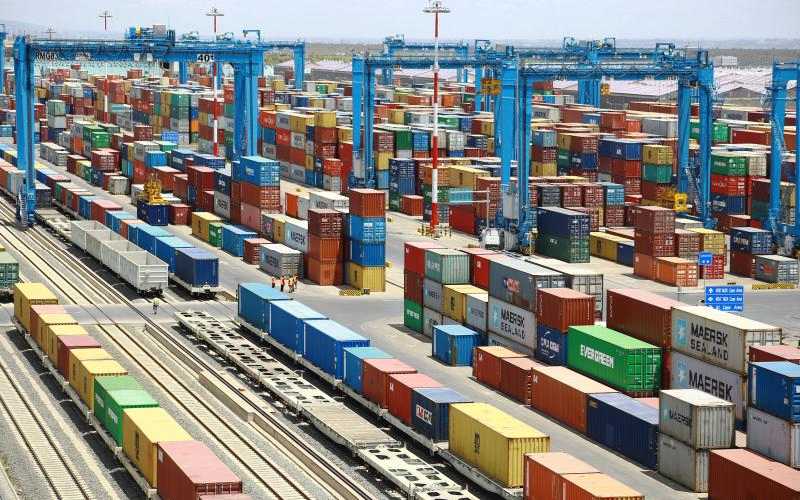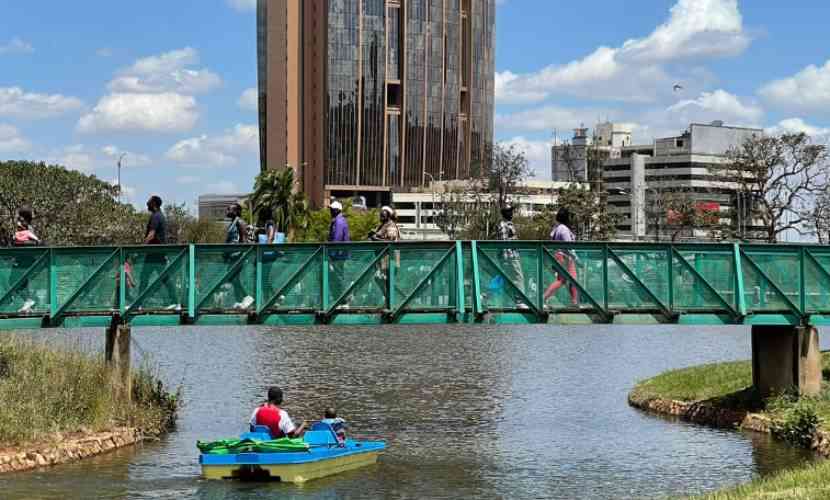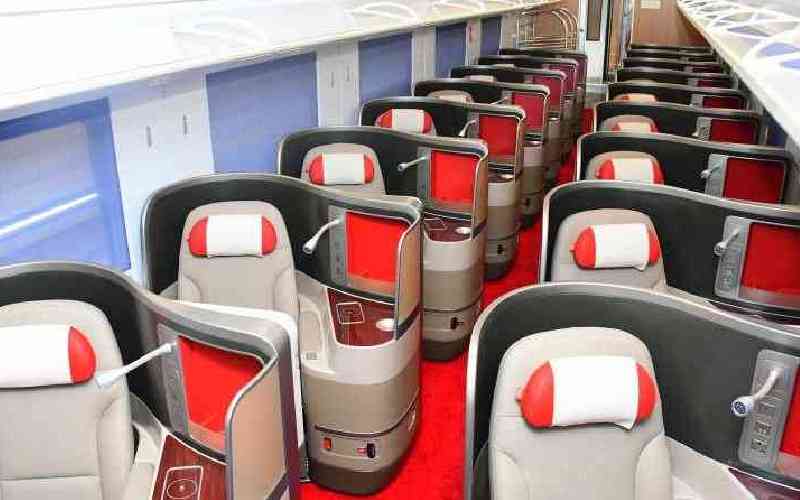
The road is a sparkle. A true gem. It snakes from the western entrance of the Nairobi Inland Container Depot (ICD) to the southern bypass interchange near Ole Sereni hotel; an important nerve that will see trucks avoid using the ever-busy Nairobi- Mombasa highway.
The trucks will now be diverted to the southern bypass, ending years of pain that motorists have experienced because of never-ending traffic snarl-ups along Mombasa road.
The 3.8 kilometre Nairobi ICD road was developed under the last-mile project to ease the movement of cargo from the Standard Gauge Railway (SGR) to other parts of Kenya.
The Nairobi ICD was established in 1984 but it was largely unknown until recently when the government instructed cargo transporters to use the SGR.
A directive that caused friction between truck drivers and the State.
The drivers argued that enforcing such a directive will render them jobless. It will also hurt the economic well-being of the port city of Mombasa and other towns on the transport corridor.
Amid the fight between the government and truck drivers, the Nairobi ICD had been operating at 10 per cent capacity as of 2018, according to data from the Ministry of Transport.
Realising the need to make the Nairobi ICD viable, and in order to lure truckers to the depot, the government started an ambitious project to improve the infrastructure around it.
Data from the ministry shows that the Nairobi ICD is now operating at 75 per cent capacity.
According to Kenya Ports Authority (KPA) pre-Covid-19 performance report in 2019, a total of 418,830 twenty-foot equivalent units (TEUs) were handled at the Nairobi ICD up from 257,972 TEUs in 2018.
Other than the standard Class B National Highway ICD road to the southern by pass, the spacious 29 hectares inland depot has other access roads to ease movement to and from it.
The contractor, China Road and Bridge Construction Corporation, has built a circular access road around the depot to decongest the area.
The other roads under the last-mile project are Road B which links the ICD to the Eastern Bypass and Road L which connects Road B to the ICD as well. Road 4 connects ICD to Mombasa Road at Libra house.
All these roads were built at a cost of Sh1 billion according to Kenya National Highways Authority (KeNHA).
Stay informed. Subscribe to our newsletter
In addition to reducing congestion, the access roads connect to the wider bypasses around Nairobi including the Northern Bypass and the Western Bypass.
The roads will also be linked to the Nairobi Expressway in a grand design to facilitate transport around Nairobi.
The road also facilitates the movement of cargo to Naivasha onwards to the Rift Valley and to the border town of Malaba.
Before the project, trucks would line up for kilometres, but the dualling of the roads has now enabled them to line up in an orderly manner.
Khamis Ahmed, a truck driver, is one of those who have welcomed the Nairobi ICD road.
“We know about the road, and it is a relief to us considering the trouble we have been experiencing before reaching the diversion at Ole Sereni to join the southern by pass on our way to Malaba,” said Ahmed.
John Mwariama, another truck driver at the ICD said before the Nairobi ICD road was built, trucks would line up at the ICD gates and they would waste time and resources.
“I don’t have trouble now coming to the ICD. I can easily connect to the southern by pass. The infrastructure has greatly improved and the services are efficient unlike before,” he said.
Suffice to say it is not only truck drivers who are seeing the benefits of improved infrastructure along the ICD. Land agents are now seeing a boom, selling their land at better prices.
The real estate sector which thrives on speculation has seen agents quoting thrice the amount the pieces were fetching in previous years.
According to Musa Bakele, who lives around the southern by pass, most land agents claim that their pieces are now accessible from Jomo Kenyatta International Airport and so deserve a higher prices.
“Previously, a piece of land here would go for between Sh1.8 million and Sh2.5 million but now the price has doubled.
“In some instances, it has even tripled due to the improved infrastructure around this area,” said Bakele.
 The Standard Group Plc is a
multi-media organization with investments in media platforms spanning newspaper
print operations, television, radio broadcasting, digital and online services. The
Standard Group is recognized as a leading multi-media house in Kenya with a key
influence in matters of national and international interest.
The Standard Group Plc is a
multi-media organization with investments in media platforms spanning newspaper
print operations, television, radio broadcasting, digital and online services. The
Standard Group is recognized as a leading multi-media house in Kenya with a key
influence in matters of national and international interest.
 The Standard Group Plc is a
multi-media organization with investments in media platforms spanning newspaper
print operations, television, radio broadcasting, digital and online services. The
Standard Group is recognized as a leading multi-media house in Kenya with a key
influence in matters of national and international interest.
The Standard Group Plc is a
multi-media organization with investments in media platforms spanning newspaper
print operations, television, radio broadcasting, digital and online services. The
Standard Group is recognized as a leading multi-media house in Kenya with a key
influence in matters of national and international interest.









